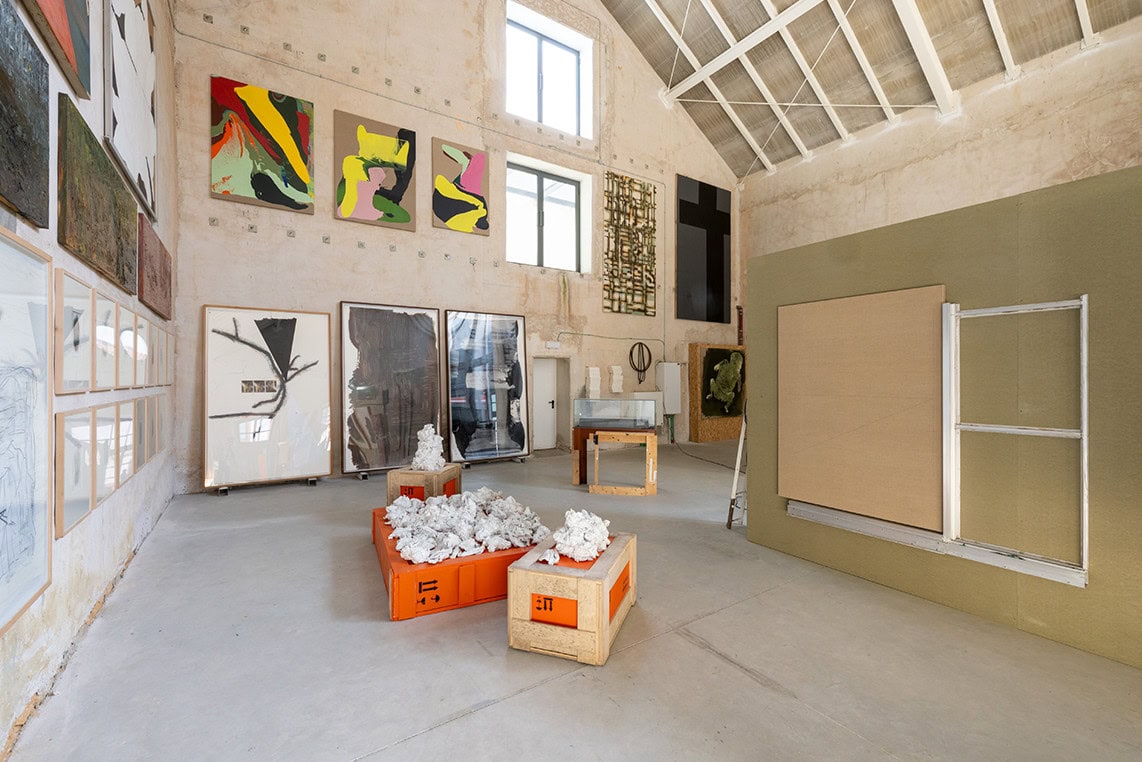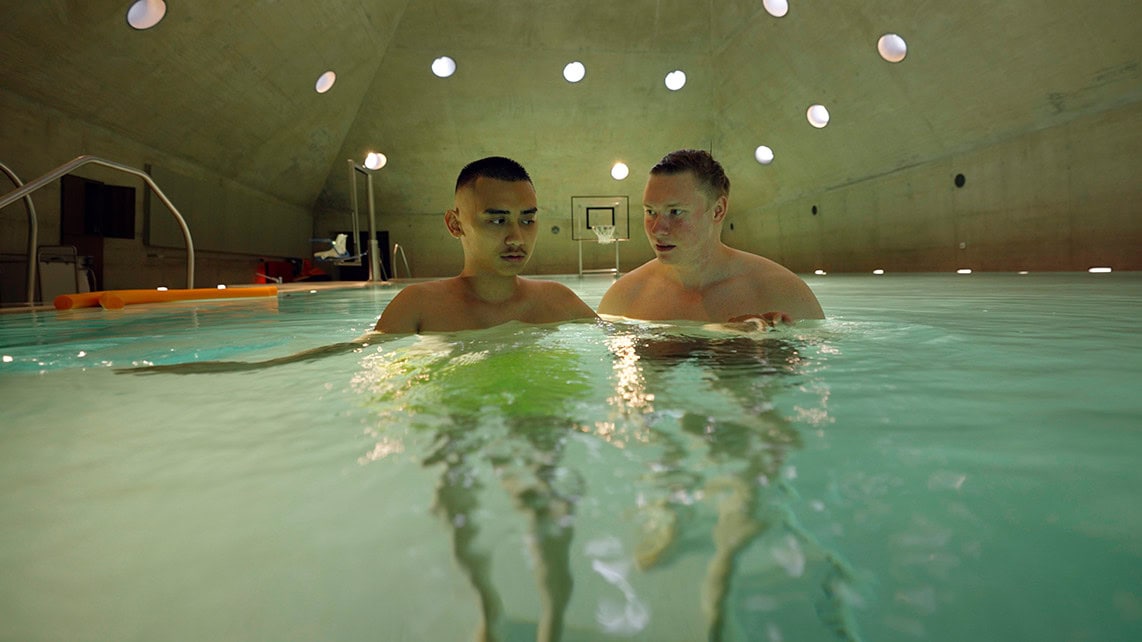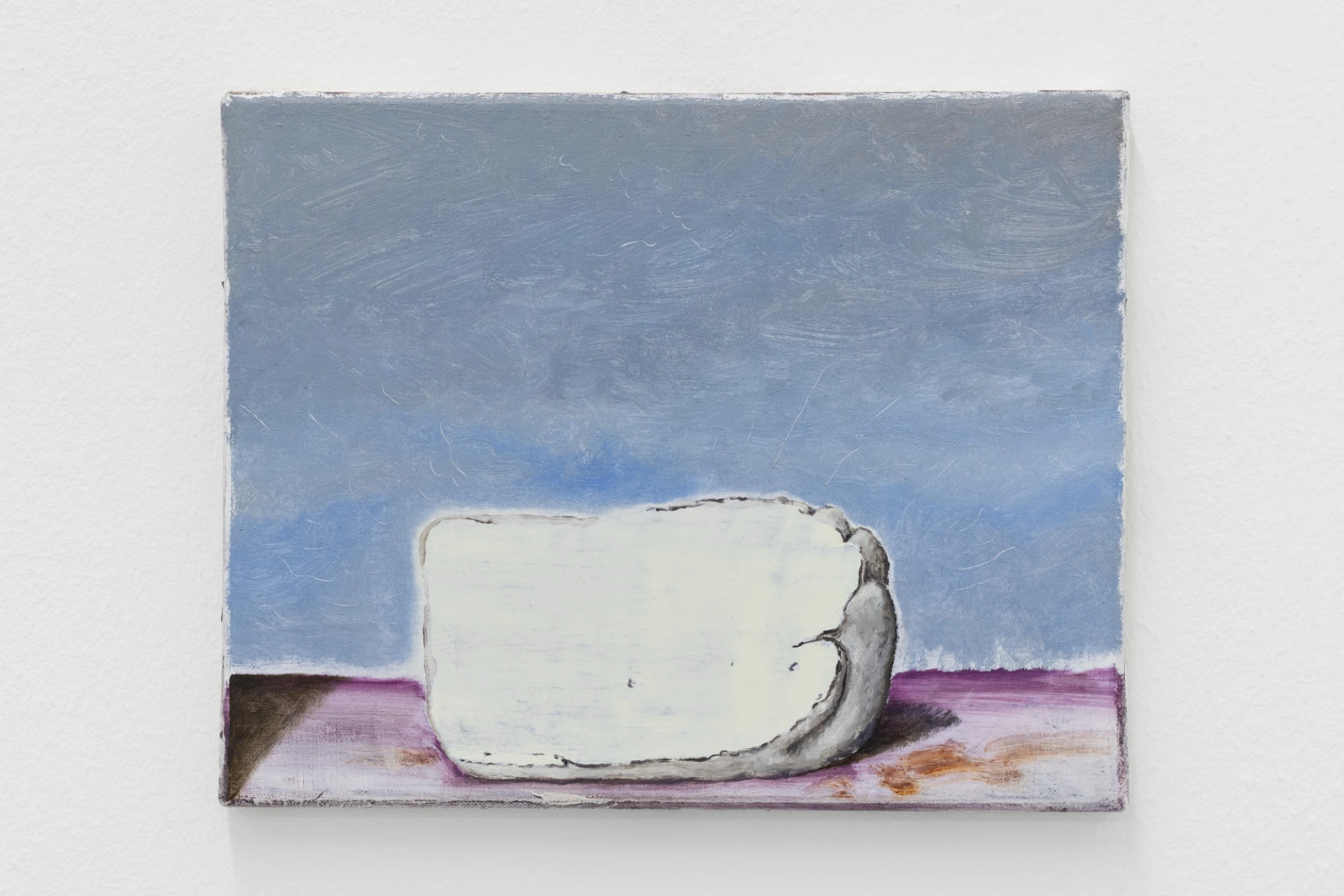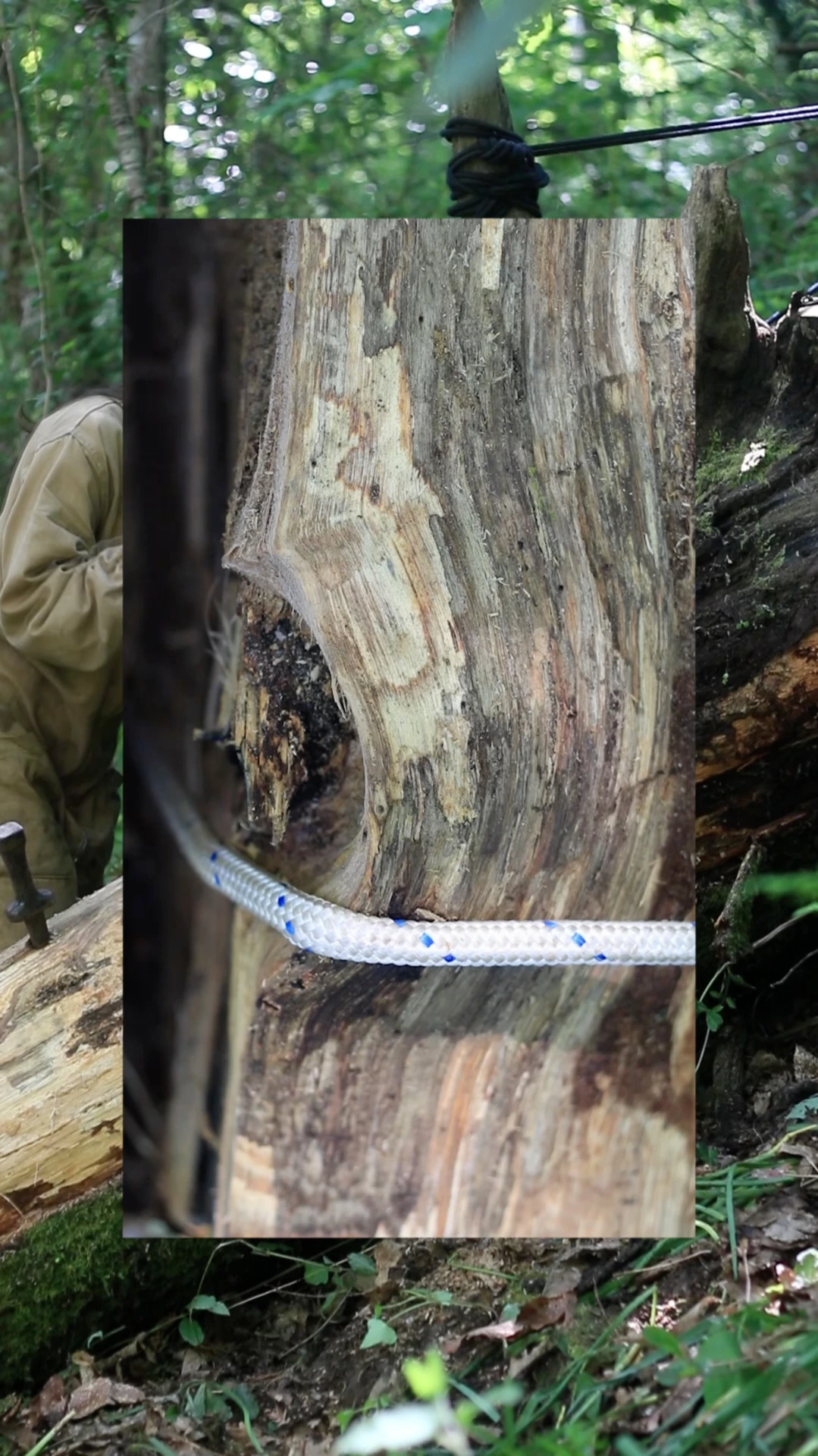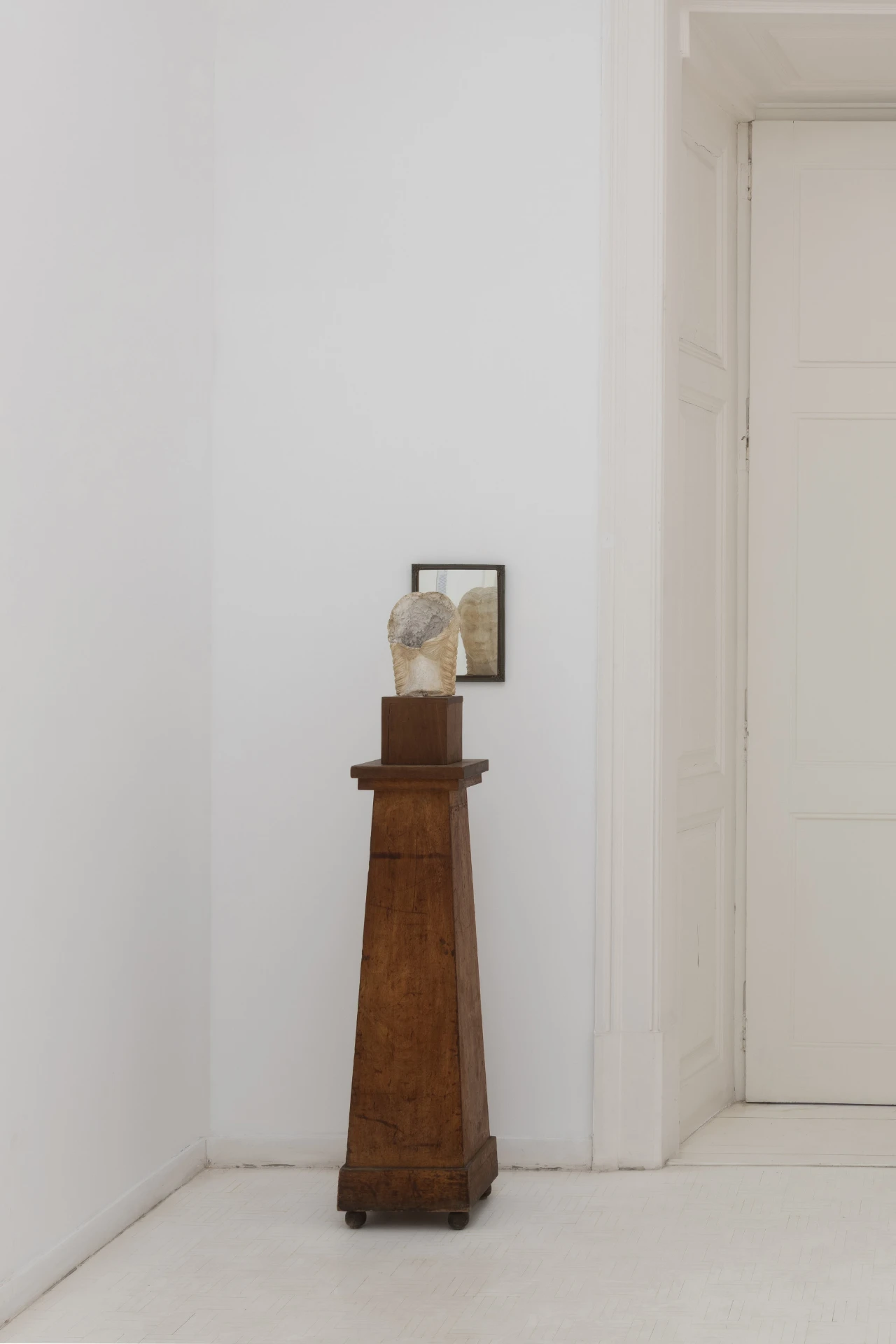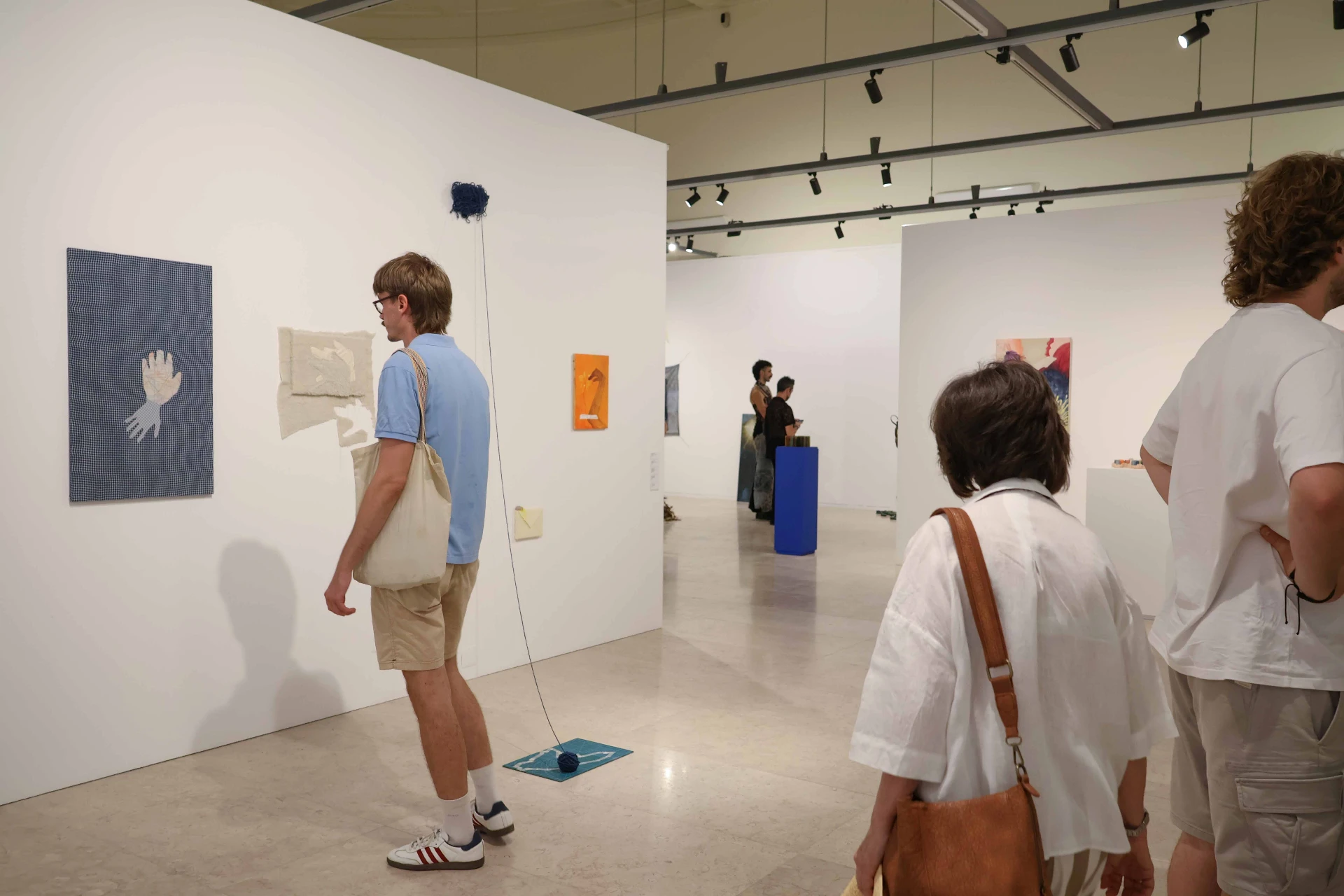Upon entering the 119 Marvila Studios gallery, visitors find the first installations in the Eu Estou Aqui exhibition by Leylâ Gediz, a Turkish artist now living in Lisbon.
From an inconspicuous gallery corner, a voice also strikes out and distinguishes itself in the venue through its eloquent and passionate expression. Luisa Cunha’s voice was looped and repeats the words: “It’s here”[1]. The artist’s speech apparently directs its focus towards the visitors themselves and their awareness of where they are. Perhaps they realise: “Yes, I’m here”. One senses an astonished tone. The artist calls out, there is an exclamation, emotion in her voice, perhaps some measure of surprise, and we are lulled by it. Our body is moving.
Ricardo Nicolau, in 2007, for the catalogue of the artist’s solo exhibition at the Serralves Museum, aptly described the audience’s experience and the awareness of their own presence[2]. He said: “To be perceived, to become aware of our role as observers, of our physical presence in space, is a mandatory element of Luísa Cunha’s sound pieces”[3].
Indeed, the audio seems to hold us back, to circumscribe us to a captive place of our own. More than the gallery itself, however, the place we dwell in is that of thought. Of wondering, of questioning. We are driven to scan our own gestures, the paths we have previously followed, perhaps even to the gallery. Or is it our very being that is being questioned?
Ricardo Nicolau[4] further enlightens us on the relationships that Luisa Cunha’s pieces stir within us, or otherwise impact our perceptual field. He mentions a dominant geometric figure that he considers to be embedded in her work: the line. A guiding line that may “control people, unsettle them or provide them with different degrees of comfort and reassurance”[5].
Luisa Cunha’s “voice” actually prompts us to question ourselves, drawing us back to our musings and to our own condition as receptors of stimuli and, ultimately, of lives and memories. And she accomplishes this with the fewest resources possible, or, to quote Roberta Smith, a “severe reductionism”[6].
Cunha employs language as a tool and, as Smith described some conceptualism, “brings certain aspects of life, rather than art, into the viewer’s mind and psyche”. But Cunha’s work urges reflection. Alongside what Smith called “Social Realist Conceptualism”[7], featuring a sheer “absence of images”[8]when dealing with social, political and existential topics, the artist’s pieces are not restricted to this condition. On the contrary, their structure is grounded in concept and idea, in art’s logic and analytical devices. We are led not only to look inwards, to the other psychological triggers inhabiting our being, but also, and more significantly, to a “definition of art”[9], its evolution and the questioning of its underlying principles.
Cunha’s dematerialisation process encourages the receptor to indulge in an exercise of reverberation and profound reflection, generating science-quality questions. Art, and its condition, is brought up for discussion, over and above all other things.
An arch is outlined around Luisa Cunha’s audio piece. Leylâ Gediz’s first installation is on display to garnish this crown. An inverted tripod supported by a pressed wood cylinder and then, at the base, by a lightweight piece of expanded polystyrene (the well-known Styrofoam).
An objet trouvé consisting of a pile or heap of disjointed things found at random (and stored in the studio), reminiscent of arte povera, possibly ennobled and recontextualised, something the artist usually translates into painting.
On the wall, together with the piece, there is a painting depicting four candles inside transparent glass cups. A handwritten text-poem entitled Styrofoam Dreaming (Resist) is next to it.
The gallery features a long blank wall attached to a high mezzanine. One corner of it has a long spiral staircase with winding, elegant lines. The same wall is then grooved with small nooks and crannies topped by round arches.
These tiny corners, hidden places, have surprises in store. One of them holds another black and white painting by Leylâ Gediz: Dolls House. This one shows Leylâ sitting on the floor next to a large cardboard box. The curator Isabel Carlos describes it “as a double self-portrait of the artist”. Since she “appears inside a shelter box”, facing us, whilst also leaning over the same box, but with her back to the audience.
The box had once figuratively served to transport the artist. She has only recently been living in Portugal and is going through an adaptation period to a new culture and language.
Another installation of the artist’s reused objects is on the floor to the left of the Dolls House painting: Altar. Comprising a vase shaped like a Buddha’s head, it is surrounded by a screen of raw corrugated cardboard, neither processed nor disguised in any way (a material the artist often resorts to). The little buddha is again perched on a very fragile Styrofoam support. The vulnerable way in which the corrugated cardboard is laid on the ground poses the threat of toppling over onto the little Buddha at any minute, emphasising a sense of transience. There is something coming, something about to change unexpectedly.
In her catalogue Camada a partir do Plano de Fundo, Luísa Sol describes how Leylâ finds similarities between Martim Moniz and parts of Istanbul. Its successive reconstructions, certain odours, the boxes piled up outside the shopping centre. The artist is perhaps channelling these flows, these transmutations, these social and urban choreographies, within a long and perpetual movement, ever changing and shifting.
The vibrant pieces by Finnish artist Raija Malka pop up among Leylâ Gediz’s stage installations. Malka “likes to intuitively work with colour”[10]. She is concerned with “affective processes”[11], stimulated by “memories of places”[12] and evocations of the past[13].
Malka’s paintings, Résurrection, Prologue, are complemented by the artist’s scenic flair, just like Gediz. Densely painted, layer upon layer, the paintings reveal vibrant colour and a painstaking chiaroscuro treatment along the contours of the volumes depicted, usually within architectural settings. They induce, at one point, an optical effect[14] and, at the same time, a cosmic, otherworldly, artificial result. The volumes appear suspended. Like a magnet, we are driven to step in, to walk around inside, to be part of that place, the one that lives in our memory and imagination. Isabel Carlos makes this tangible experience of space feasible by taking the interior of Malka’s studio into the gallery. A studio table is cluttered with small patches of docile colours with delicate undertones. Colourful shapes, combined with volumetric effects, serve as compositional elements for her paintings.
Curated by Isabel Carlos, Eu Estou Aqui is at 119 Marvila Studios until June 30, 2024.
[1] A 2008 audio piece by Luísa Cunha.
[2] Nicolau, R. (2007). Luísa Cunha. Serralves Museum Catalogue, pp. 57-70.
[3] Ibidem.
[4] Ibidem.
[5] Ibidem.
[6] Smith, R. (1980). “Conceptual Art”. In: Stangos, N. (Ed.) (1994). World of Art Series. Thames and Hudson.
[7] Ibidem.
[8] Ibidem.
[9] Ibidem.
[10] According to Paulo Pires do Vale. (2014). “Gymnasion”. Exhibition catalogue. CAM. Calouste Gulbenkian Foundation, pp. 37, 39.
[11] Ibidem.
[12] Ibidem.
[13] Ibidem.
[14] Typical of painting, but heightened by the dense shapes and shadow treatment. Are they cinema screens? Small screens? Sci-fi imaginations?
